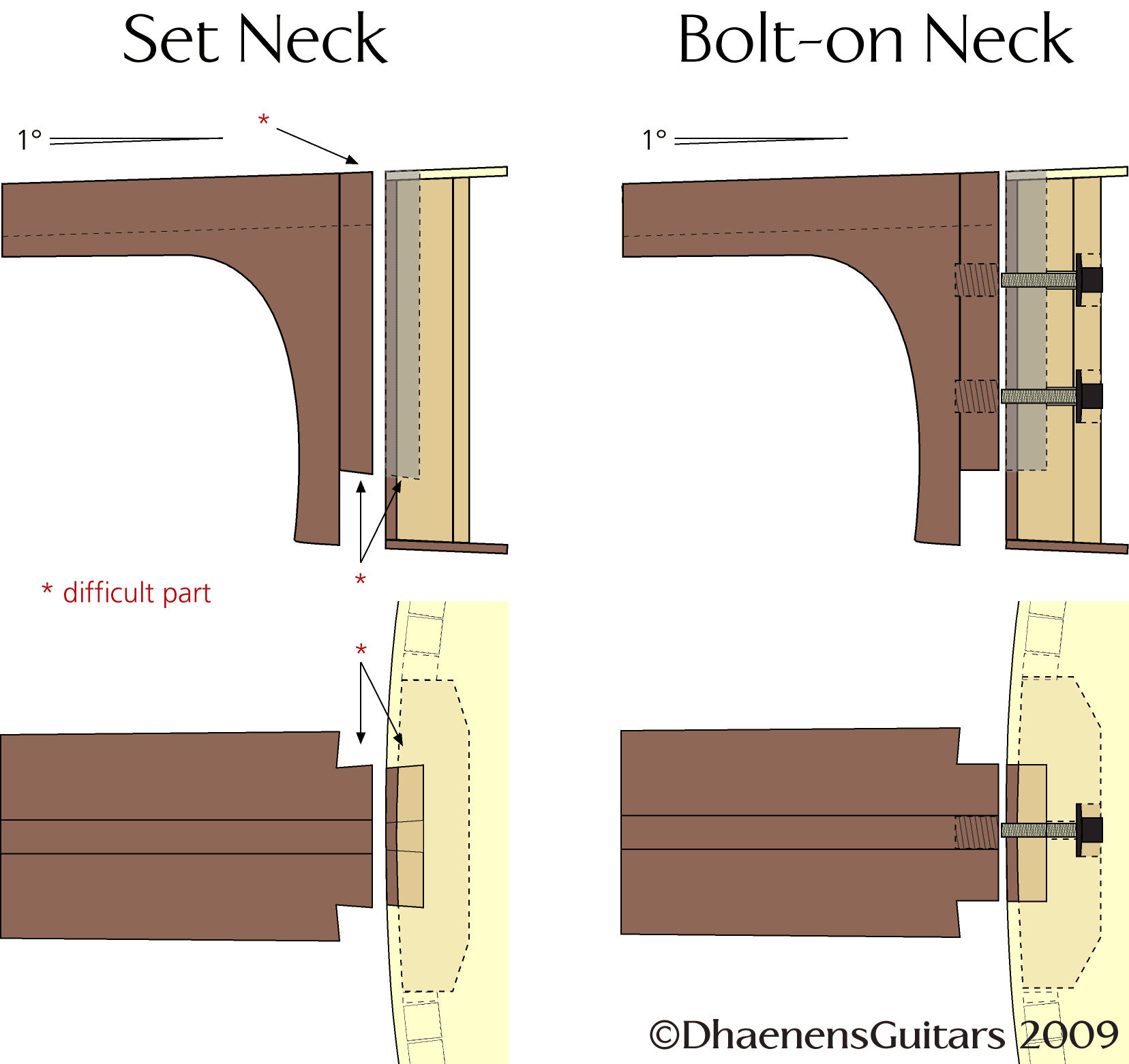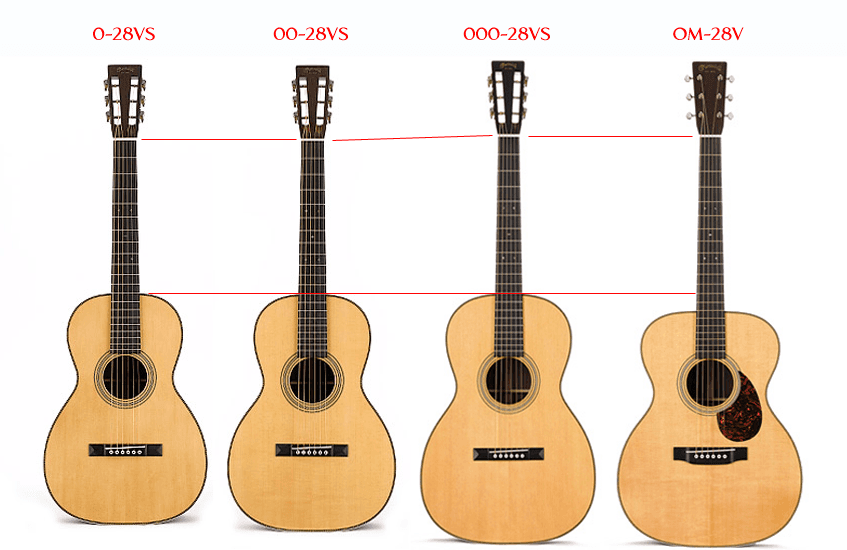It's cold and freezing
- door Guy D'haenens
- •
- 15 aug, 2017
- •
The effects of low humidity levels on your precious guitar
It’s cold and it’s freezing outside. -8°C.
Inside the house, it’s warm and cozy with family and friends dropping in for Christmas and New Year. But do you think that your precious guitar is having a good time too? Well, think again.
Wood is a living organism, even if the tree it originated from was harvested 20 years ago. It will keep on expanding and shrinking as the relative humidity of the air it is surrounded with changes. In the summer, when relative humidity levels are sometimes as high as 70%, the overall size of a piece of wood will be greater than in the winter when the freezing cold and the cranked up heating of our living room has squeezed out the last bit of moisture in the air. Although the changes affect the length, width, height and weight of a piece of wood, the differences are most notable along the width (across the grain) and have a greater affect on slab-sawn wood than on quarter-sawn wood (figure 1). That is one of the reasons why luthiers insist on using quarter-sawn tops and backs.

Figure 1: An Illustration of how slab sawn and quarter sawn slabs shrink during drying
Once the wood has been thoroughly air-dried (over 20 years), the expansion and contraction is minimal. Unfortunately, most of the time we have to do with kiln-dried wood. Kiln-drying is nothing more than blowing heated air over stacked wood for 2 or 3 days. The moisture is sucked out of the wood by the dry, hot air. Wood that is kiln-dried is stable for use under normal circumstances and a fairly constant relative humidity of 45%-50%. Once the temperature and the relative humidity change, the wood absorbs or looses moisture again. Every luthier who knows what he/she’s doing, will always further air-dry kiln-dried wood before using it to minimize distortion of the assembled guitar.
So what happens to that beautiful guitar when you put in on the stand in your cozy living room? Well, everybody will admire it, especially when you start playing it. But after a while, you’ll notice that there’s a fret sticking out just a little bit, that the action has lowered and the tone of the guitar isn’t as full as it used to be. Or is it mere imagination? No, it’s not. Your guitar is suffering from the extreme dry air. It’s drying out. And if you don’t act promptly, you’ll end up with a guitar with a cracked top or back.
Check the following illustration. Notice all the small red arrows indicating the contraction movement when drying-out. In the end, something’s going to give or crack.

Figure 2: Signs of a dry guitar
The first thing you’ll notice is the flat, not-as-sparkling sound of your guitar. Sadly enough, that is something that most people will try to ignore. Next thing you’ll notice (and believe me, you will !) are the protruding frets you cut your fingers on when performing a rather unprofessional slide. By this time, the relative humidity of your room has dropped to 35%. Next thing, the strings will start to buzz on several frets. That’s because the top has shrunk (it’s almost flat now) and the sunken saddle is now positioned several mm lower than before. The guitar constantly plays out of tune, whatever you do. The top has also pulled the fretboard end downwards so you’ll notice a hump at the 14th fret. With a relative humidity of 27% and still dropping, it will take only another week before your guitar top or back cracks.

Figure 3: The effects of drying-out: a lowered saddle, low action, string buzz and a fretboard hump at the 14th fret

Figure 4: The effects of drying-out: a flat top and back
There are several things you can do to avoid all this misery. First, always store your guitar in its case during the winter (and leave it outside the case during the hot, damp summer). Second, use a humidifier inside the case. They don’t cost a fortune but if you can’t afford one, use a damp sponge wrapped in a plastic bag so it doesn’t stain the guitar – and re-damp it often. Third, buy yourself an analogue or digital humidity reader so you don’t have to rely on the state of your dried-out lips or skin.
And if money is not a problem, buy yourself an air-conditioning system that is also capable of controlling relative humidity levels.
If your guitar is already in a dried-out state, you can still resurrect it by putting it in its closed case and restore the humidity level. Refill the humidifier every day or re-damp the sponge every other day and it will get all-right. It will take some time though, at least a week, probably more.
If the guitar top has cracked, act just the same before taking it to a luthier. We can fix the guitar by cutting the crack open, putting a shim of the same wood type in the crack and glue some shims to the underside of the top to prevent further cracking. But I hope that after reading this article, you’ll be smart enough not to let your beauty dry-out completely.
Sadly and controversially enough, only the expensive, solid wood guitars suffer that much of the fluctuations in humidity levels. It will take much longer before you’ll notice deformation on cheap plywood guitars. The expansion/contraction movement of each of the thin sheets of wood is counteracted by its counterpart that is glued across the grain (turned at a 90° angle). In terms of stability it’s a much better deal. If you have to travel a lot in extreme and uncontrollable conditions, you’d better leave your beauty at home in its case and take a cheap plywood guitar with you. And let someone refill the humidifier every week while you’re away.
Guy's Blog

Guitars are designed for the 12-tone equal tempered tuning (12-TET). In a 12-tone equal tempered tuning, an octave is divided in 12 semitones at an equidistance of each other: C, C# or Db, D, D# or Eb, E, F, F# or Gb, G, G# or Ab, A, A# or Bb, B.
12-tone equal tempered tuning assumes that e.g. C# is soundwise exactly in the middle of C and D. As you could have guessed, in real life it’s not, it’s only in the mathematical middle and soudwise a bit on the sharp side.
Guitars and all other instruments are tuned at A4= 440 Hz. In 1939 musicians world-wide came to a consensus on that pitch. Before that time, the pitch had been 435 Hz, 374 Hz (1648) and 503 Hz (1361) but those were merely guidelines. Each maestro was free to compose or direct at a lower or higher pitch.
(Hz is the unit to express the number of oscillations of pressure in a sound wave. 440Hz means that there are 440 oscillations per second.)
When you pull an unfretted A-string on a tuned guitar, you’ll hear 110 Hz. When you fret that string at the 12th fret, you’ll hear 220 Hz. That’s exactly the double. Double or half the Hz of any tone is called an octave. Fret that string at the 24th fret and you’ll hear 440 Hz, again one octave higher or 2 octaves higher than the tone of the unfretted string. What you have done each time, is shorten the string by half. A shorter string vibrates at a higher speed thus producing more oscillations per second. A string at 440 Hz oscillates twice as fast as a string of double that length.
The guitar is fretted so we can easily pick the correct notes. Those frets are laid out according to a simple calculation.
Assume that the scale length of your guitar is 25.4″ (actually it’s 25,34″) or 643,636 mm. The scale length is the distance between the nut and the top of the saddle. The 12th fret will be exactly at 12.7″ (25.4″/2) or 321,818 mm. And since an octave in a 12-TET scale is divided in 12 semitones at equidistance of each other, the math should be fairly simple, no? Alas, dividing 12.7″ by 12 won’t do. That is because we can’t use the distance as input for our calculations, we have to use the frequences. In a 12-TET scale, the ratio of frequencies between two adjacent semitones is the twelfth root of two. And the twelfth root of two is 1.0594630943593.
So starting from the 12th fret, the exact position of the other frets is easily calculated by multiplying or dividing the position of a (previous) fret with 1.0594630943593.
The position of the 11th fret is 340,9543 mm (321,818 * 1,0594630943593); the position of the 10th fret is 361,2626 mm (340,954294100521 * 1,0594630943593); that of the 13th fret is 303,7557 mm (321,818 / 1,0594630943593) and so on.
Another way to determine the fret positions is by using the constant 17.817. The scale length divided by this value gives us the distance from the nut to the first fret.
The following table will make it more clear:




